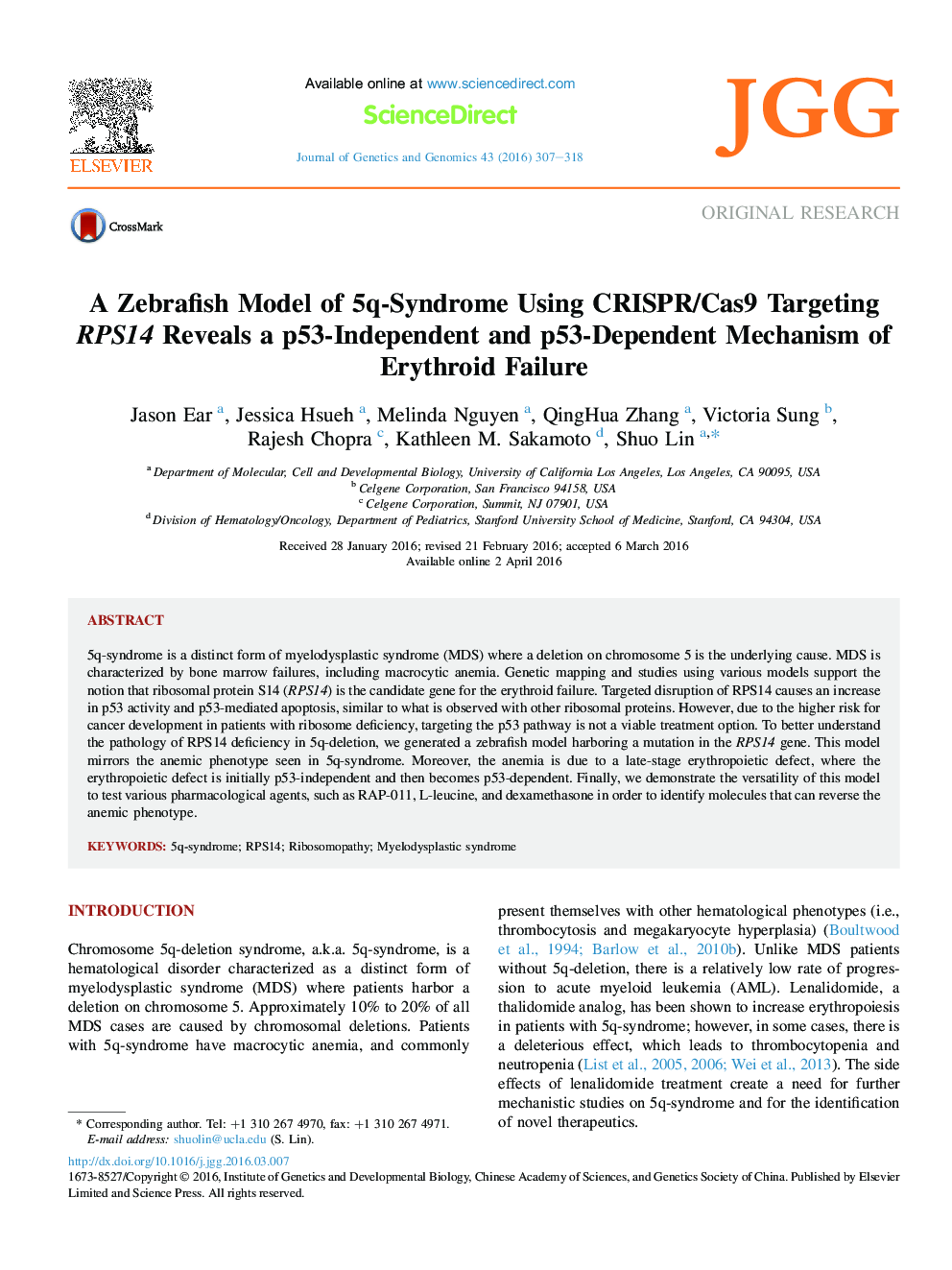| کد مقاله | کد نشریه | سال انتشار | مقاله انگلیسی | نسخه تمام متن |
|---|---|---|---|---|
| 5894018 | 1154287 | 2016 | 12 صفحه PDF | دانلود رایگان |

5q-syndrome is a distinct form of myelodysplastic syndrome (MDS) where a deletion on chromosome 5 is the underlying cause. MDS is characterized by bone marrow failures, including macrocytic anemia. Genetic mapping and studies using various models support the notion that ribosomal protein S14 (RPS14) is the candidate gene for the erythroid failure. Targeted disruption of RPS14 causes an increase in p53 activity and p53-mediated apoptosis, similar to what is observed with other ribosomal proteins. However, due to the higher risk for cancer development in patients with ribosome deficiency, targeting the p53 pathway is not a viable treatment option. To better understand the pathology of RPS14 deficiency in 5q-deletion, we generated a zebrafish model harboring a mutation in the RPS14 gene. This model mirrors the anemic phenotype seen in 5q-syndrome. Moreover, the anemia is due to a late-stage erythropoietic defect, where the erythropoietic defect is initially p53-independent and then becomes p53-dependent. Finally, we demonstrate the versatility of this model to test various pharmacological agents, such as RAP-011, L-leucine, and dexamethasone in order to identify molecules that can reverse the anemic phenotype.
Journal: Journal of Genetics and Genomics - Volume 43, Issue 5, 20 May 2016, Pages 307-318